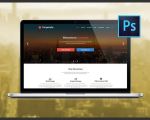- 1-Understanding-the-importance-of-unique-website-design
- 2-Key-elements-for-standout-website-design
- 3-Customizing-design-to-your-industry
- 4-Leveraging-user-experience-and-visual-appeal
- 5-Real-world-examples-of-successful-website-design
- 6-Resources-for-website-design-and-support
1. Understanding the Importance of Unique Website Design
Designing websites that stand out in your industry is essential to capture attention and build brand credibility. In a crowded digital marketplace, a generic website risks being overlooked, while a distinct design can communicate your brand’s personality, values, and professionalism effectively. Understanding the critical role of uniqueness helps businesses invest in design choices that differentiate them from competitors.
1.1 How Unique Design Impacts Brand Perception
A website’s design shapes first impressions. A visually appealing and thoughtfully crafted site suggests trustworthiness and quality, encouraging visitors to explore and engage further.
1.2 The Competitive Advantage of Standing Out Online
With many industries experiencing saturation, an original website design can be a powerful competitive advantage, making your business memorable and driving higher conversion rates.
2. Key Elements for Standout Website Design
Several core components contribute to a website’s ability to stand out:
2.1 Consistent Branding and Visual Identity
Colors, typography, and imagery aligned with your brand create a cohesive look that reinforces recognition.
2.2 Intuitive Navigation and Structure
Clear navigation helps users find information effortlessly, enhancing usability and satisfaction.
2.3 Engaging Content and Interactive Features
Compelling copy, videos, animations, and calls to action keep visitors interested and encourage interaction.
3. Customizing Design to Your Industry
Every industry has unique demands and audience expectations. Tailoring your website design to reflect industry trends and customer preferences is crucial.
3.1 Understanding Industry Standards
Researching competitors and market leaders reveals design patterns and functionalities your audience expects, providing a baseline for innovation.
3.2 Balancing Creativity with Professionalism
While standing out is important, maintaining professionalism suited to your industry builds credibility and trust.
3.3 Incorporating Industry-Specific Features
Features such as booking systems for service businesses, product galleries for retail, or portfolios for creative industries enhance relevance and usability.
4. Leveraging User Experience and Visual Appeal
User experience (UX) and aesthetics work hand-in-hand to create memorable websites.
4.1 Mobile Responsiveness
With growing mobile traffic, responsive design ensures your website looks and functions well on all devices.
4.2 Fast Loading Times
Speed affects both user satisfaction and search engine rankings. Optimizing images and code keeps visitors engaged.
4.3 Accessibility Considerations
Inclusive design expands your reach and complies with legal standards, improving overall UX.
5. Real-World Examples of Successful Website Design
A boutique design agency revamped its site using bold colors, custom illustrations, and interactive portfolios, resulting in a 40% increase in client inquiries.
Another example is an eco-friendly product brand that incorporated natural textures and a clean layout, enhancing brand storytelling and boosting online sales significantly.
6. Resources for Website Design and Support
For businesses seeking professional guidance and design solutions that help their websites stand out, SitePoint 24 offers a wealth of resources and expert services. Their tailored approach supports industries of all types in building effective, memorable online presences.
Investing in website design that truly reflects your brand and industry needs positions your business for greater visibility, engagement, and success in the digital age.








